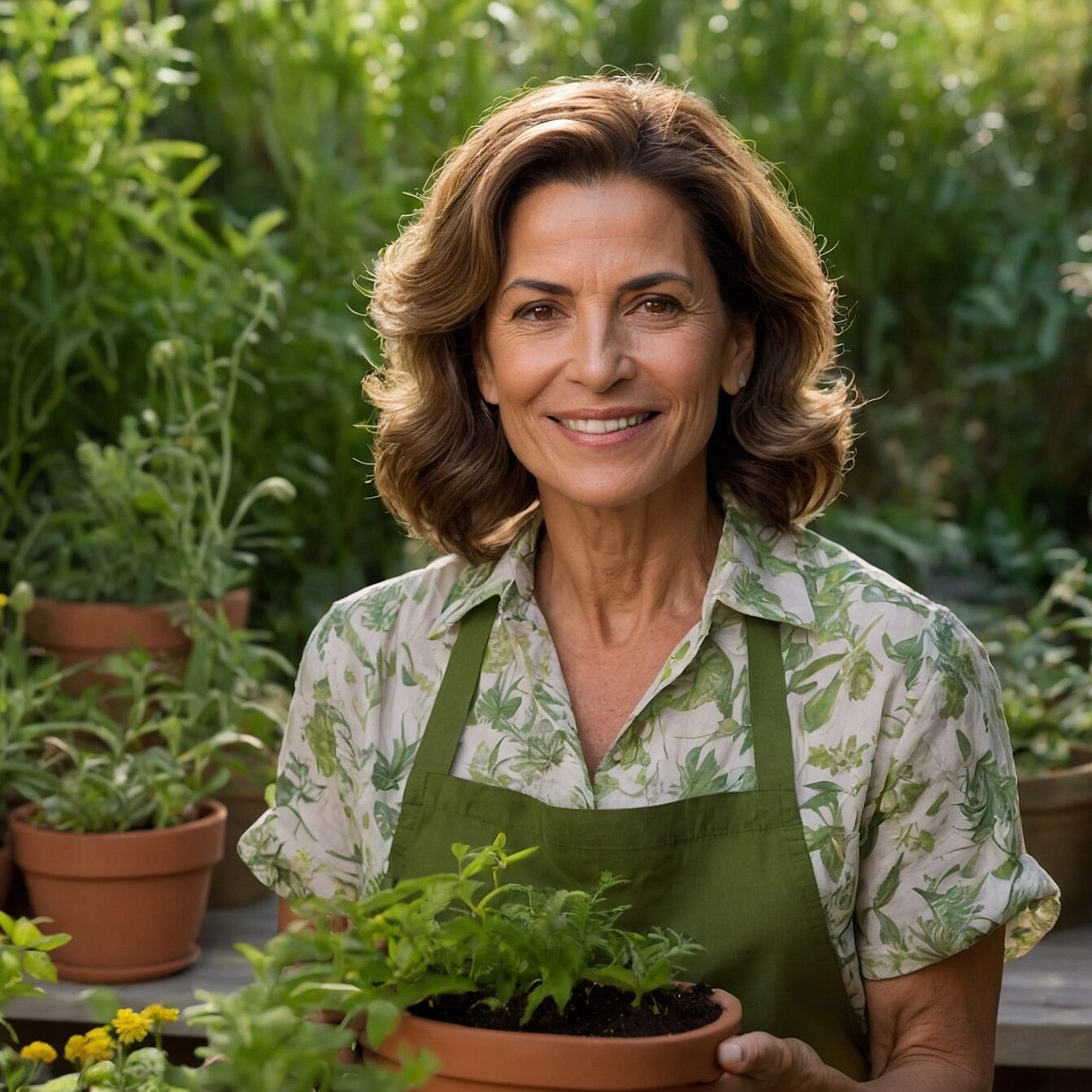Table of Contents
Introduction
In the vast universe of plants, succulents stand out for their diversity and unique beauty. These fascinating plants, known for their fleshy leaves and ability to store water, have won the hearts of many gardening enthusiasts around the world. In this section, we’ll explore the enchanting world of succulents and discuss the importance of understanding the specific needs of each type, thus ensuring their healthy and lush cultivation. Get ready to dive into the fascinating world of succulents!
What are Succulents?
Succulents are plants that stand out for their ability to store water in their leaves, stems or roots, allowing them to survive in arid and dry environments. These plants belong to a wide variety of botanical families and come in a wide variety of shapes, colors and sizes. Their common characteristics include fleshy, swollen leaves, adapted to retain water, and a variety of shapes that can be spherical, flat, elongated or rosette-shaped. Succulents are also known for their resistance and ease of cultivation, making them popular choices for gardens, landscaping arrangements and indoor and outdoor plant collections.
3 types of sun Succulents
Sun succulents are those that thrive in sunny environments, where they receive direct light for several hours a day. These plants have developed physical and adaptive characteristics that allow them to cope with conditions of intense light and heat. Some of the common characteristics of sun succulents include:
- Thick, fleshy leaves: The leaves of these succulents are often thicker and more fleshy, which allows them to store water for periods of prolonged drought.
- Vibrant coloring: Many sun succulents feature vibrant colors, such as shades of deep green, red, orange and purple. These colors can help protect plants from the sun’s intense rays.
- Compact growth: To maximize the absorption of sunlight, some sun succulents develop compact growth, with leaves close together and short stems.
Popular examples of sun succulents include:
- Echeveria: With their compact rosettes of fleshy, rosette-shaped leaves, Echeverias are sun succulents prized for their beauty and endurance.
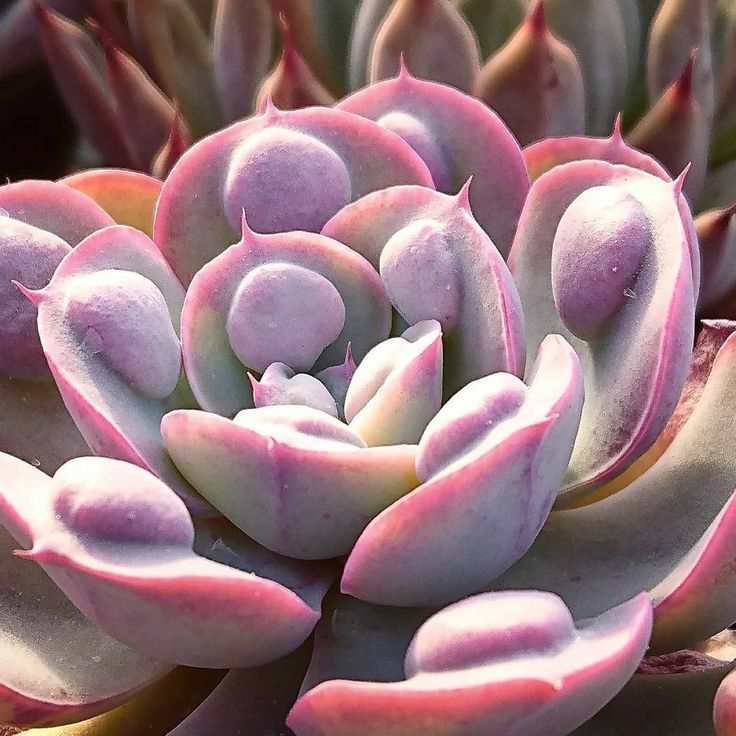
- Sedum: This diverse genus of succulents includes varieties suitable for sunny environments. Some species, such as Sedum rubrotinctum (also known as “jade fingers”), have delicate, colorful leaves that change hue according to the season.
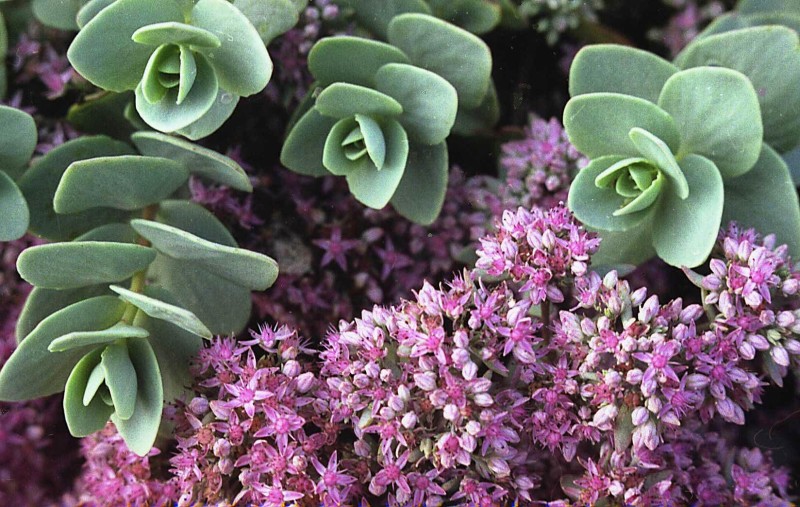
- Crassula: Another popular group of sun succulents, Crassulas are known for their variety of shapes and textures. Examples include Crassula ovata, or “jade plant”, with its rounded, succulent leaves, and Crassula perforata, with leaves arranged in rows along the stems.
These are just a few of the many sun succulents that can bring beauty and life to any sunny garden or collection of succulent plants.
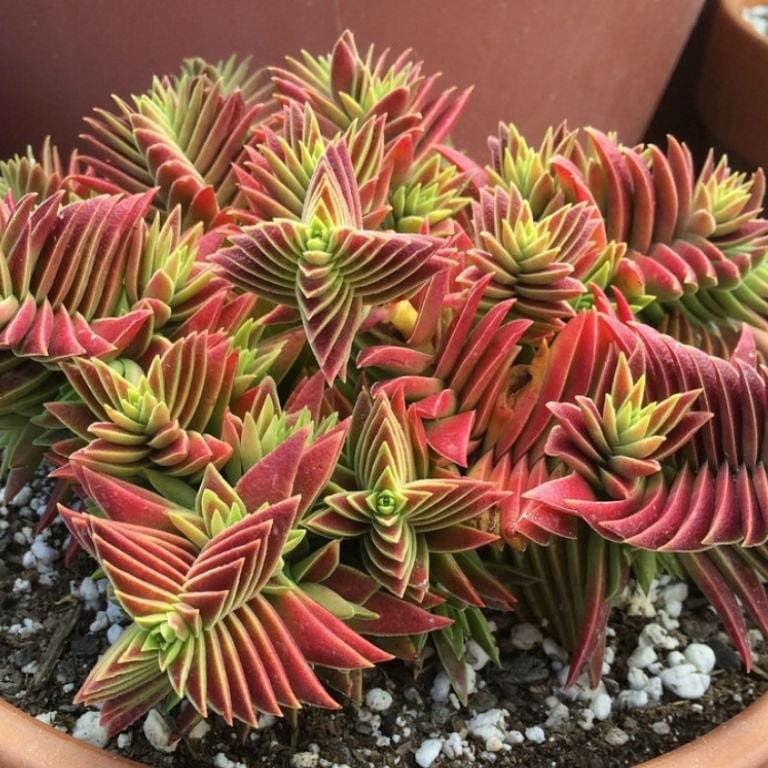
3 types of shade Succulents
Shade succulents are those that thrive in partially or fully shaded environments, where they receive less direct sunlight. These plants have developed physical and adaptive characteristics that help them cope with low light conditions and benefit as much as possible from the limited availability of sunlight. Some of the common characteristics of shade succulents include:
- More Delicate Leaves: Compared to sun succulents, many shade succulents have more delicate and thinner leaves, adapted to absorb the diffused light available in shady environments.
- Lightercolouring: Many shade succulents have a lighter or variegated colouring, which can help in reflecting light and maximizing the absorption of light energy.
- Vertical Growth: Some shade succulents develop a more vertical growth, allowing them to reach the available light in shady environments.
Popular examples of shade succulents include:
- Haworthia: This genus of succulents is known for its succulent, fleshy leaves, often grouped in rosettes or geometric patterns. Haworthias are adapted to partial shade environments and can thrive indoors in low light.
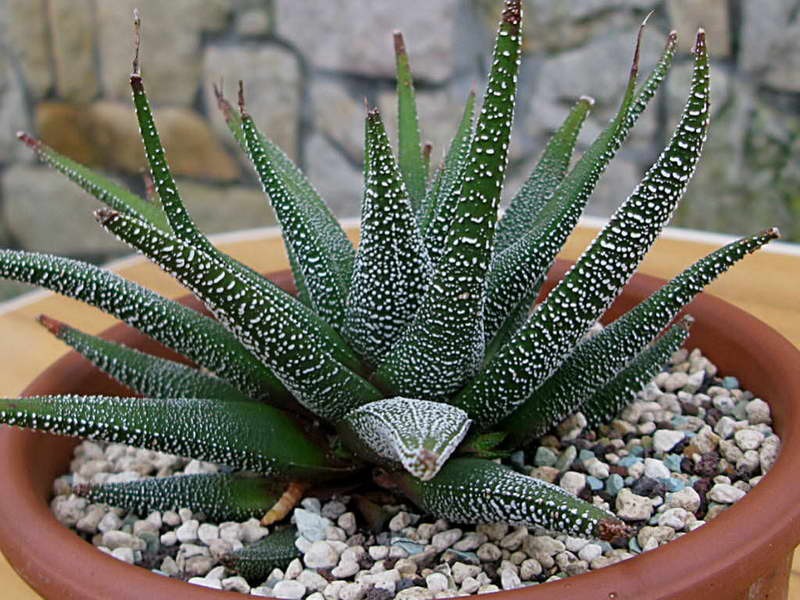
- Sansevieria: Also known as “St. George’s sword” or “mother-in-law’s tongue”, Sansevieria is a popular shade succulent appreciated for its upright foliage and resistance to low light conditions. It is an excellent choice for indoor environments with indirect light.
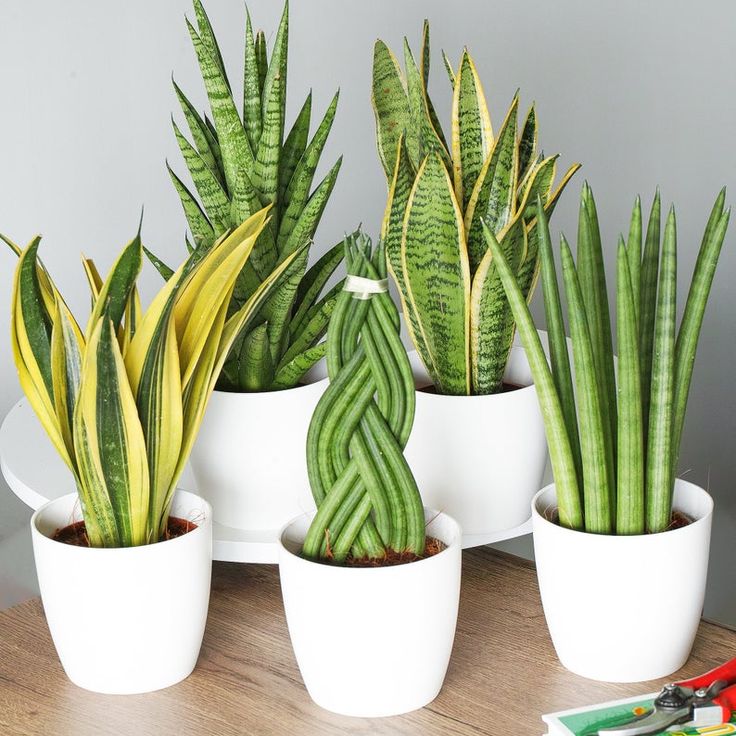
- Gasteria: Similar to Haworthias, Gasterias are shade succulents that feature rosettes of fleshy, succulent leaves. They are suitable for partial shade and can be grown both indoors and outdoors.
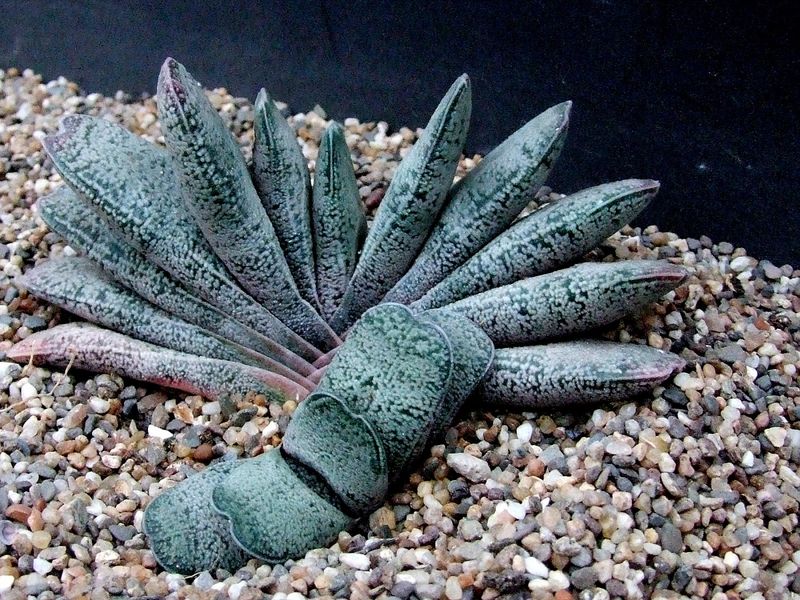
These are just a few of the many shade succulents available, each bringing its own unique beauty and character to shady gardens or succulent plant collections.
3 Differences between Sun and Shade Succulents
Sun and shade succulents have different needs in terms of light, water and temperature. It’s important to understand these differences to ensure the successful cultivation of each type. Here is a comparison of the needs of each type:
1. Light requirements
- Sun Succulents: Prefer direct, intense sunlight. They should be placed where they receive at least 6 hours of direct sunlight a day.
- Shade Succulents: Thrive in environments with partial or total shade. They are suitable for places with indirect or filtered light, avoiding direct exposure to strong sunlight.
2. Water requirements
- Sun Succulents: Because they receive more direct light, sun succulents tend to evaporate water more quickly and may need more frequent watering, but always take care not to soak the soil.
- Shade succulents: As they receive less direct light, shade succulents have a lower water evaporation rate and may need less frequent watering. However, it is important to avoid overwatering, as stagnant moisture can lead to root rot.
3. Temperature requirements
- Sun Succulents: Generally tolerate higher temperatures better and prefer warmer climates. However, some varieties may need protection from excessive heat.
- Shade Succulents: These are more tolerant of lower temperatures and can thrive in cooler climates. However, it is also important to protect them from frost and extremely low temperatures.
Identifying Specific Characteristics
- Leaves and stems: Observe the appearance of the succulent’s leaves and stems. Thicker, fleshy leaves usually indicate a sun succulent, while more delicate, thinner leaves may indicate a shade succulent.
- Colors and Patterns: Pay attention to the colors and patterns of the leaves. Sun succulents tend to have more vibrant colors, while shade succulents may have lighter or variegated colors.
By identifying the specific characteristics of each type of succulent and meeting their individual light, water and temperature needs, you will ensure successful cultivation and the continued health of your succulent plants.
How to Care for Sun and Shade Succulents
Caring for sun and shade succulents requires attention to their specific needs. Here are some guidelines for successful cultivation of each type, along with practical care tips:
Sun Succulents
Watering:
- Water only when the soil is completely dry.
- When watering, wet the soil well, but avoid leaving it soggy.
- Use pots with good drainage to avoid water accumulation.
Fertilizing:
- Fertilize during spring and summer with a diluted balanced fertilizer.
- Reduce or suspend fertilization during autumn and winter, when the plant’s growth slows down.
Repotting:
- Repot every 1-2 years, when the roots start to come out of the pot.
- Use a well-drained soil specifically for succulents when repotting.
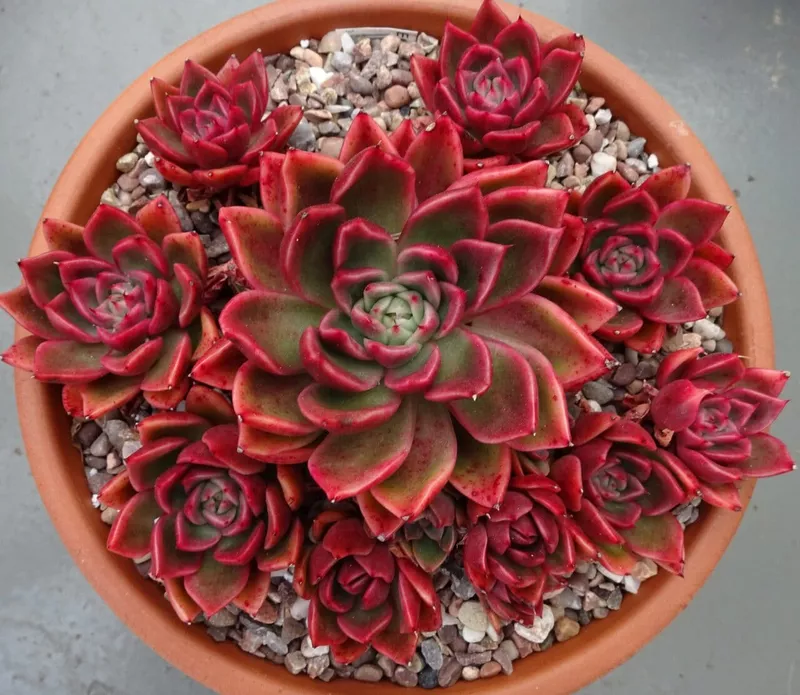
Shade Succulents
Watering:
- Water less frequently than sun succulents as they have a lower water evaporation rate.
- Only water when the soil is almost dry, but not completely dry.
Fertilizing:
- Fertilize sparingly during spring and summer, using a diluted fertilizer.
- Avoid fertilizing during autumn and winter, when the plant’s growth slows down.
Repotting:
- Repot when necessary, usually every 2-3 years.
- Use a light, well-drained soil, adding perlite or sand to improve drainage.
By following these care guidelines and adapting them to the individual needs of each type of succulent, you will be providing an ideal environment for the healthy and exuberant growth of your plants, whether they are sun or shade plants.
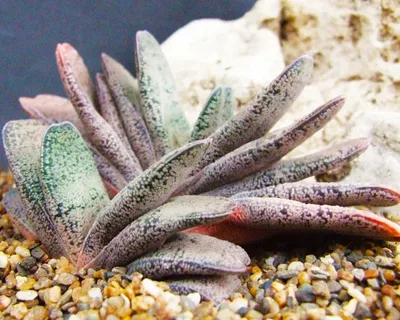
Conclusion
Throughout this guide, we’ve explored the differences between sun and shade succulents, highlighting their specific light, water and temperature requirements. While sun succulents prefer sunny environments and require more frequent watering, shade succulents thrive in places with indirect light and require less water. It is essential to understand these differences in order to ensure the successful cultivation of each type of succulent.
By applying this information to your crops, you’ll be providing an ideal environment for the healthy and exuberant growth of your succulents. Remember to adapt the care according to the individual needs of each plant and to regularly observe its condition to ensure its continued health.
With dedication and attention to the specific needs of your succulents, you’ll be able to enjoy a vibrant and exuberant collection, bringing beauty and life to your space. Don’t hesitate to experiment with different varieties and growing techniques to find out what works best for you and your plants.
Now it’s time to put this information into practice and embark on an exciting journey of growing succulents, making the most of the beauty and diversity of these fascinating plants.
Frequently Asked Questions
Which succulent can stay in the shade?
Succulents such as Haworthia, Sansevieria and Gasteria are some of the varieties that adapt well to environments with partial or total shade. They have characteristics that make them better suited to receiving diffused light, avoiding direct exposure to strong sunlight. These plants are excellent choices for low-light indoor areas or shaded outdoor spaces.
What kind of succulent can be left in the sun?
Succulents such as Echeveria, Sedum and Crassula are examples of plants that thrive in sunny environments. These sunny succulents are adapted to receiving direct, intense sunlight and are ideal for outdoor gardens or well-lit indoor areas. They have physical characteristics that help them cope with intense sunlight, such as thicker leaves and vibrant coloring.
How do I know if my succulent needs sun or shade?
To determine whether your succulent is suitable for sun or shade, look at its physical characteristics and growth behavior. Sun succulents generally have thicker leaves and more vibrant coloring, while shade succulents tend to have more delicate leaves and lighter colors. Also, look at where the plant is currently growing: if it’s in a sunny, healthy spot, it’s likely to be a sun succulent, while a plant that grows well in a shady spot is probably a shade succulent.
